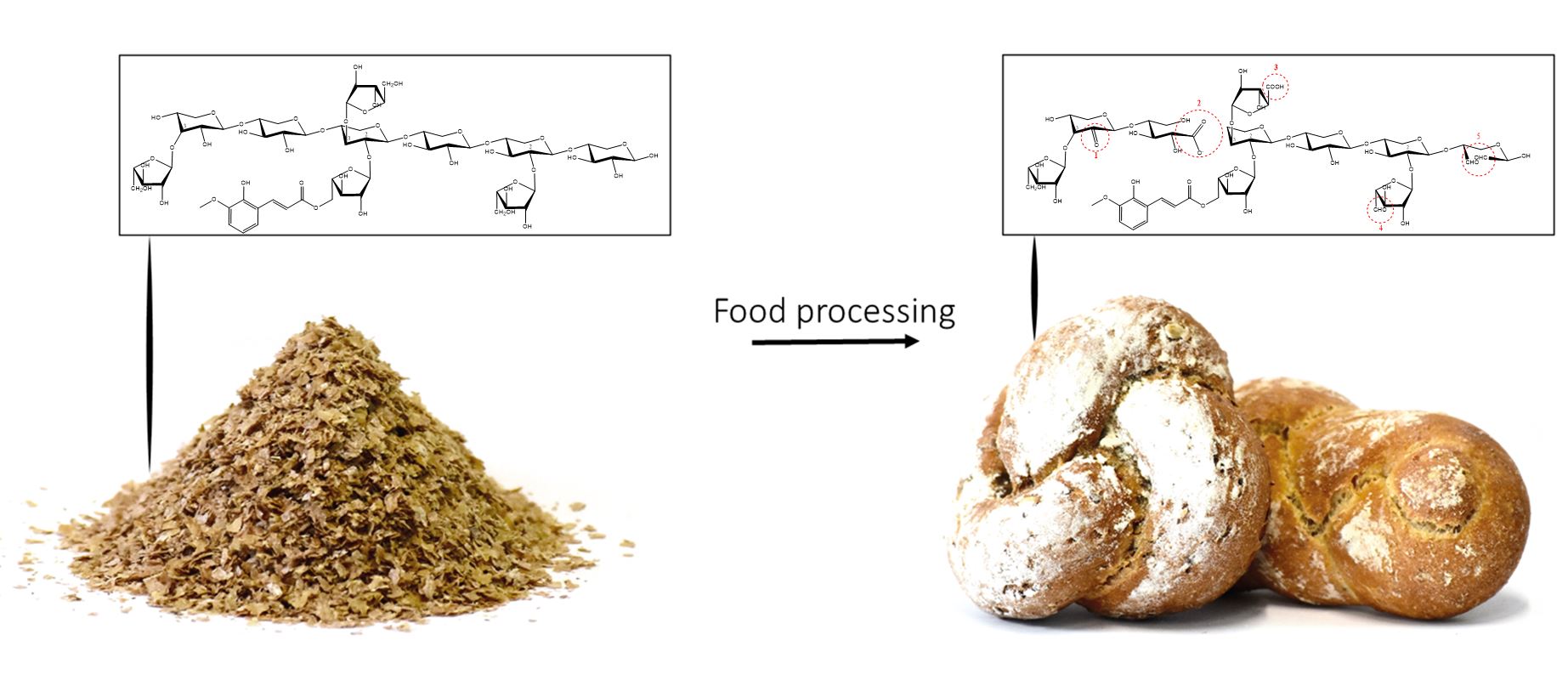Arabinoxylan Modification
Oxidative modification of cereal arabinoxylan and its impact on the nutritional value
Backgrounds
The growing demand of food fibers as functional food ingredient has led to the development of a potential market in the food industry. Besides finding new fiber sources, which can be applied in food products, supplementation has been used to enhance fiber content in food. One of those promising fibers is feruloylated Arabinoxylan (AX), a soluble cereal fiber found predominantly in the cell walls of the endosperm and aleurone layer of wheat and rye grains. In the large intestine, AX can be degraded into oligosaccharides (AXOS) in the presence of bacteria such as Lactobacili possessing the specific enzymes. Both AX and AXOS are associated with various health benefits including immunomodulatory activity, cholesterol lowering activity, attenuate type II diabetes, enhanced absorption of certain minerals, fecal bulking effect, prebiotics effect and the reduction of the post-prandial glycaemic responses. Within the food matrix AX is prone to oxidation.
Research goal
Carbohydrate oxidations induced by hydroxyl radicals (HO•) preferable during food processing creates a complex product mixture. To enable possible application of AX as functional food the structural characterization of those oxidation products and the related changes in their health effects need to be investigated. The long term vision of this research area is to optimize food processing towards enhanced bioavailability of desired nutrients and to maximize health benefits of DF.

